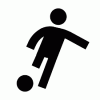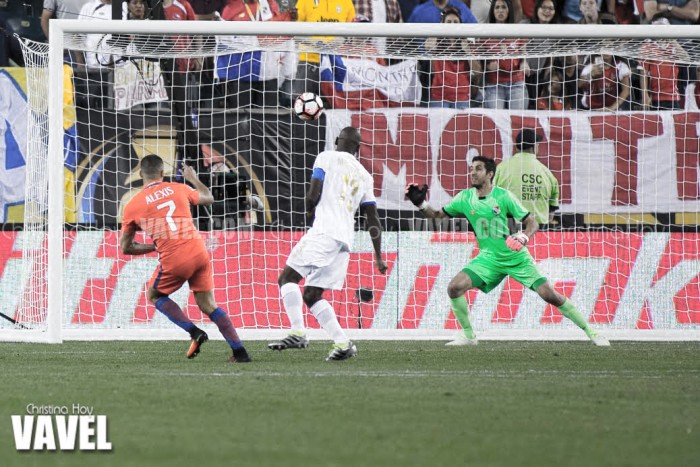Chile finally returned to form Tuesday night, defeating Panama by a 4-2 final score to advance to the quarterfinals, and Alexis Sanchez could not have had more to do with it. From his masterful incisive runs to the laser volley he blasted past opposing goalkeeper Jaime Penedo, he was the life of the La Roja attack.
Sanchez, for the first time of this Copa America Centenario, was played at left wing by coach Juan Antonio Pizzi, and that proved to be the difference-maker. Similarly to the style of Bayern Munich and Netherlands winger Arjen Robben, Alexis has found his niche on the side of the pitch opposite his strong foot. But it makes perfect sense.
Alexis on the right
During his earlier days with FC Barcelona, Sanchez was a supporting player to Lionel Messi, who at the time played a false 9 (center forward) position under Pep Guardiola. With Messi dropped back, Sanchez had free-roam of the right wing, able to use space to his advantage in making crosses towards the box and cutting in diagonally for goalscoring opportunities.
Alexis was a right wing for Barcelona because he was part of Messi's secondary cast and could most effectively feed the magnificent finisher from the right side. Not to mention his numerous wonder-goals from the top-right corner of the box.
Guardiola's system was perfect for right-wing Alexis Sanchez, but now that the 27-year-old superstar heads the attack for both Arsenal and Chile, employing him on the right is simply illogical. With both the Gunners and La Roja utilizing fullbacks to trudge up the wings, right backs Hector Bellerin (Arsenal) and Mauricio Isla (Chile) clog the space in which Alexis would maneuver at Barça. This forces Sanchez to favor runs across the box from the right, and while he is very skilled with both feet, Alexis does not possess a terribly dangerous left-footed shot.
Alexis on the left
Instead, playing on the left provides Alexis the opportunity to push towards the center of the attacking pitch and ping shots with his strong foot. Eduardo Vargas, the closest thing Chile's first team has to a natural number nine, is a right-footed finisher, and left-wing Sanchez provides great versatility and partnership to the Chilean attacking scheme. In this regard, effective-wingbacks Jean Beausejour and Isla become the players in charge of putting balls in the penalty area and Chile's dynamic duo up top can focus on scoring.
Sure, as Pizzi said after Tuesday's win, the most important thing "is that Alexis is playing." He "has the capacity to play in whatever position he can on the pitch," but for right now, the best option for Chile and for Alexis is the left wing. It limits Chile's east-to-west passing tendencies when the defense holds a deep back line and is quite the catalyst for many quick transition chances, whether or not the electric Sanchez is involved.

Chile certainly looked better with Alexis on the left versus Panama, with Beausejour crossing in many more balls than he relayed back to the defense, Vargas cutting in, and Sanchez doing it all, evading defenders in open space, creating optimal chances, and finishing with great prowess.
With Chile facing scorching Mexico in its first matchup of the knockout stages, the team has got to be at its best, something we caught a glimpse of at Lincoln Financial Field on Tuesday. If Pizzi wants to see that in-form team, the one that won it all last year back home in Santiago, it certainly looks like playing Alexis Sanchez on the left side of the attack is the first step. Growing pains aside, that's the key to the full implementation of Pizzi's scheme with the Chileans.






































